Opinion & Analysis
A Study That Changed the Way Golfers Think About Wedges
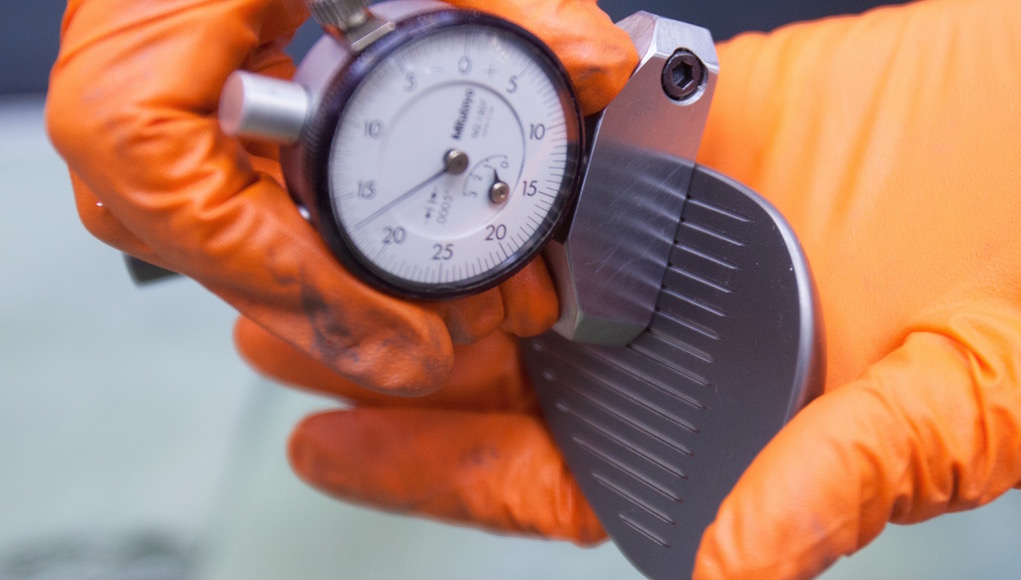
Ever wonder: What’s the difference between my wedges and the ones used on the PGA Tour? The DNA is identical, but the actual clubs on tour are normally unique to each player.
More than any other type of club, the modern wedge was borne of and by the best professional golfers in the world. Its place in design results from the demands and navigation of the most difficult competitions and courses. But the obvious question of whether “tour wedges” are necessary or even suitable for average golfers may help shed light on our clubs in everyday use.
Commercially available, or “stock” wedges, are sold as essentially the same tools that tour professionals use, however, professional golfers have customized their wedges forever. Tour heads are naturally heavier to allow for the extra shaping. Players grind them to their liking in terms of sole, head shape and leading edge shapes. Generally, measurements have less importance than how the club looks or how the wedge works with their game. Specifications get recorded after modifications have been made. Manufacturers use the tour prototypes to share with the public the same basic equipment as the best players in the world use, but often the modified “one-off” clubs aren’t exactly the same as the final products found on the shelves.
At the heart of the matter: THE BOUNCE, or the angle of the sole plane relative to the ground plane, has always been a source of disagreement and debate. It used to be a widely held belief that tour players used wedges with extremely low bounce values. The perception was that the better the player, the less bounce was required and vice versa. While that may have been true in a few limited cases, normally clubs with low bounce angles had wider soles. Another way of saying that is the distance from the leading edge to the trailing edge was longer.

A wider sole acts like it has more bounce, and it does when the player opens the face. The leading edge of the club lifts higher off the ground when the sole is wider, acting like extra bounce. Another wedge contour called “camber,” the roundness of the sole from the leading edge to the back of the sole, can substitute for additional bounce.
Whether genius or completely misguided, wedge manufacturers regularly published bounce values that were substantially different from the absolute values found on the clubs themselves. Even as recent as 1998, conventional wisdom regarding the amount of bounce used by PGA Tour players in so-called lob wedges was about 3 degrees. We now know that this was laughable. Better players are steeper… yes? So why would they use wedges with knife-like leading edges and soles? They wouldn’t with the exceptions of a few very rare cases. It turned out to be urban legend.
Typically, a very low bounce angle would incorporate a wider sole and more camber (roundness) to counter the effects of a flatter bounce angle. Wider soles act like added bounce, especially with an open face. These features are commonly found in so-called “game improvement” wedges for average golfers like Callaway’s Sure Out or the XE-1… you know, the one from the infomercial on Golf Channel.
Early on in my career at Cleveland Golf (I worked for Cleveland as The Senior Designer from 1998-2004 and consulted with them until 2009), we discovered that our documentation (brochures and other collateral materials) reflected inaccurate wedge bounce specifications. This was true of both consumer and “tour-only” products. Upon learning of these discrepancies, Cleveland Golf CEO Greg Hopkins (founder and owner of Hopkins Golf) dispatched me, a Cleveland consultant at the time, to travel the U.S. professional tours to measure and document all of the sole properties of every wedge in use in American professional golf. This was a gigantic undertaking involving more than 1,000 golf clubs. Over the course of several months, I traveled to PGA, LPGA, Champions and Web.com tours to measure wedges and document everything in a master database. We considered anything north of 45 degrees loft to be a wedge.
My Measurements
- Bounce Angle (in three places): Toe, heel and center.
- Sole Width (in three places): Toe, heel and center.
- Rocker Radius: The roundness from heel to toe.
- Camber Radius: The rounded contour from the leading edge to the back flange.
- Leading Edge Roll: The sharpness or dullness of the leading edge.
- Every Player Was Asked the Question: “Which loft is your primary sand club?”
Before this study, the task of creating tour wedges was something of a “black art.” It was iterative and often wasteful. We often had to custom fabricate many wedges for a player to get one in their hands. The results of the study might well have been one of the most revealing research projects in the history of the game. As a company, we were no longer guessing; we knew what wedges professional golfers needed and used, and it made our job a lot easier. We now had a primmer and a robust template to go by.
Through the study, we discovered the average loft progression for three-wedge sets was a six-degree spread: 47, 53 and 59 degrees. Almost no one played with a stock 56-degree sand wedge unless it was part of a four-wedge set, which was rare. The 56-degree wedges were normally bent to 54 degrees, and usually much of their flanges had been ground off usually to make them narrower (it should be noted that doing that actually INCREASES the measured bounce angle). The most common four-wedge loft progression was 46, 51, 54-55 and 59-60 degrees. We also saw many “pitching wedges” that were not matched to the iron sets. These didn’t look like 10 irons, but more like real wedges.
Finally, we learned that the vast majority of PGA Tour players had one wedge with higher relative bounce and one with lower relative bounce.
RELATIVE BOUNCE DEFINITION: If two wedges have identical sole properties (bounce angle, sole width, leading edge roll, camber radius and so on), the higher-lofted wedge will dig more and the lower-lofted wedge will act as though it has more bounce potential.
And most EXPLOSIVE of all, we learned that the average lob wedge (58-60 degrees) had 12 degrees of bounce angle. At the time it was stunning, to put it mildly. These high-bounce lob wedges were being used as the go-to primary sand clubs for the best players in the world. The so-called “sand wedge” (a 56-degree wedge with about 14 degrees of bounce) had become all but a dinosaur. The modern primary sand club has about 59 degrees of loft and 12 degrees of bounce.
The results of the research effort gave birth to several new concepts and a complete cultural change in Cleveland’s wedge programs. I like to believe that this was a paradigm for the entire industry at large, and we had contributed to the game.
- We rid wedges of letters SW, DW, PW, and LW in lieu of loft numbers.
- We conceived, developed and documented the concept of “net bounce,” a mathematical algorithm that predicted and derived sole specifications (bounce angle, sole width, camber and so on) for new wedge products at any loft. That is a part of the wedge development doctrine at Cleveland Golf to present day.
- We introduced the concept of multiple bounce options for any loft, known as the “Dot” system. Shortly afterwards, almost all other golf companies followed suit.
- Internally, we started to use the vernacular “primary sand club” with all of our fitting programs and wedge packages. And this was the way we communicated that to the tour as well.
We essentially changed the definition of what a sand wedge was. The subliminal connotation was that there were several sand clubs, not one dedicated to the purpose. Of course, we all now view sand play as achieved by using several different wedges. Within the context of the wedge business at the time, this was a very disruptive and pioneering set of actions, but we were only following the lead of what the tour was already doing.
Interestingly, wedges never really fit into the concept of the matched set. While the design of a wood or iron set with a “family-like” progression of features seems pretty straightforward, wedges don’t fit that mold no matter how similar the shape to its iron siblings. Average golfers mistakenly identify wedges as the shorter end of the iron set, basically the 10-13 irons. Well, IRONS they’re not! Wedges are in a class all by themselves. They are definitely not irons in the same way that hybrids are not fairway woods. As a matter of fact, modern wedges share more in common with putters than irons.
In the first place, wedges are used in a tactical way. Think of the difference of “tactical” versus “strategic.” A driver, fairway wood or long iron deliver more strategic results…in other words, long-range targeting to a larger area. Tactical means close in targeting to a smaller area.
Wedges facilitate delicate distance control because of their weight, high loft values, low centers of gravity and deep faces. Because of the large surface area of the faces, wedges offer a diversity of points which to strike the ball and get varying results. Furthermore, with the roundness of their leading edges and often their little offset — or even onset faces — wedges allow their faces to be opened substantially without the hosel getting in the way. Opening the face increases the loft for higher short range shots and increases the bounce potential of the wedge. Complex geometry of the sole lets the user orient the wedge with a diversity of setups. Large cuts on the toe or heal called “shelving” facilitate a more vertical or flatter setup by the golfer depending on the need.
Wedges have been likened to an artists’ paint brush or knights on a chess board. Similar to an artist’s paint brush, wedges are used differently than other clubs and produce shots differently every single time they are used. These are the tools of skillful golfing artisans. And like the adept use of the knights in chess, wedges deliver an obscure and invented type of shot, yet deadly results that confound the competition who has limited understanding of this part of the game.
Indeed the wedge game has become the modern signature of the very best players in the world. And if you think about it, it makes total sense. The modern wedge was developed with professional golf in mind.
- LIKE535
- LEGIT61
- WOW25
- LOL4
- IDHT2
- FLOP5
- OB0
- SHANK20
19th Hole
Vincenzi’s LIV Golf Singapore betting preview: Course specialist ready to thrive once again

After another strong showing in Australia, LIV Golf will head to Sentosa Golf Club in Singapore looking to build off of what was undoubtedly their best event to date.
Sentosa Golf Club sits on the southern tip of Singapore and is one of the most beautiful courses in the world. The course is more than just incredible scenically; it was also rated 55th in Golf Digest’s top-100 courses in 2022-2023 and has been consistently regarded as one of the best courses in Asia. Prior to being part of the LIV rotation, the course hosted the Singapore Open every year since 2005.
Sentosa Golf Club is a par 71 measuring 7,406 yards. The course will require precise ball striking and some length off the tee. It’s possible to go low due to the pristine conditions, but there are also plenty of hazards and difficult spots on the course that can bring double bogey into play in a hurry. The Bermudagrass greens are perfectly manicured, and the course has spent millions on the sub-air system to keep the greens rolling fast. I spoke to Asian Tour player, Travis Smyth, who described the greens as “the best [he’s] ever played.”
Davis Love III, who competed in a Singapore Open in 2019, also gushed over the condition of the golf course.
“I love the greens. They are fabulous,” the 21-time PGA Tour winner said.
Love III also spoke about other aspects of the golf course.
“The greens are great; the fairways are perfect. It is a wonderful course, and it’s tricky off the tee.”
“It’s a long golf course, and you get some long iron shots. It takes somebody hitting it great to hit every green even though they are big.”
As Love III said, the course can be difficult off the tee due to the length of the course and the trouble looming around every corner. It will take a terrific ball striking week to win at Sentosa Golf Club.
In his pre-tournament press conference last season, Phil Mickelson echoed many of the same sentiments.
“To play Sentosa effectively, you’re going to have a lot of shots from 160 to 210, a lot of full 6-, 7-, 8-iron shots, and you need to hit those really well and you need to drive the ball well.”
Golfers who excel from tee to green and can dial in their longer irons will have a massive advantage this week.
Stat Leaders at LIV Golf Adelaide:
Fairways Hit
1.) Louis Oosthuizen
2.) Anirban Lahiri
3.) Jon Rahm
4.) Brendan Steele
5.) Cameron Tringale
Greens in Regulation
1.) Brooks Koepka
2.) Brendan Steele
3.) Dean Burmester
4.) Cameron Tringale
5.) Anirban Lahiri
Birdies Made
1.) Brendan Steele
2.) Dean Burmester
3.) Thomas Pieters
4.) Patrick Reed
5.) Carlos Ortiz
LIV Golf Individual Standings:
1.) Joaquin Niemann
2.) Jon Rahm
3.) Dean Burmester
4.) Louis Oosthuizen
5.) Abraham Ancer
LIV Golf Team Standings:
1.) Crushers
2.) Legion XIII
3.) Torque
4.) Stinger GC
5.) Ripper GC
LIV Golf Singapore Picks
Sergio Garcia +3000 (DraftKings)
Sergio Garcia is no stranger to Sentosa Golf Club. The Spaniard won the Singapore Open in 2018 by five strokes and lost in a playoff at LIV Singapore last year to scorching hot Talor Gooch. Looking at the course setup, it’s no surprise that a player like Sergio has played incredible golf here. He’s long off the tee and is one of the better long iron players in the world when he’s in form. Garcia is also statistically a much better putter on Bermudagrass than he is on other putting surfaces. He’s putt extremely well on Sentosa’s incredibly pure green complexes.
This season, Garcia has two runner-up finishes, both of them being playoff losses. Both El Camaleon and Doral are courses he’s had success at in his career. The Spaniard is a player who plays well at his tracks, and Sentosa is one of them. I believe Sergio will get himself in the mix this week. Hopefully the third time is a charm in Singapore.
Paul Casey +3300 (FanDuel)
Paul Casey is in the midst of one of his best seasons in the five years or so. The results recently have been up and down, but he’s shown that when he’s on a golf course that suits his game, he’s amongst the contenders.
This season, Casey has finishes of T5 (LIV Las Vegas), T2 (LIV Hong Kong), and a 6th at the Singapore Classic on the DP World Tour. At his best, the Englishman is one of the best long iron players in the world, which makes him a strong fit for Sentosa. Despite being in poor form last season, he was able to fire a Sunday 63, which shows he can low here at the course.
It’s been three years since Casey has won a tournament (Omega Dubai Desert Classic in 2021), but he’s been one of the top players on LIV this season and I think he can get it done at some point this season.
Mito Pereira +5000 (Bet365)
Since Mito Pereira’s unfortunate demise at the 2022 PGA Championship, he’s been extremely inconsistent. However, over the past few months, the Chilean has played well on the International Series as well as his most recent LIV start. Mito finished 8th at LIV Adelaide, which was his best LIV finish this season.
Last year, Pereira finished 5th at LIV Singapore, shooting fantastic rounds of 67-66-66. It makes sense why Mito would like Sentosa, as preeminent ball strikers tend to rise to the challenge of the golf course. He’s a great long iron player who is long and straight off the tee.
Mito has some experience playing in Asia and is one of the most talented players on LIV who’s yet to get in the winner’s circle. I have questions about whether or not he can come through once in contention, but if he gets there, I’m happy to roll the dice.
Andy Ogletree +15000 (DraftKings)
Andy Ogletree is a player I expected to have a strong 2024 but struggled early in his first full season on LIV. After failing to crack the top-25 in any LIV event this year, the former U.S. Amateur champion finally figured things out, finished in a tie for 3rd at LIV Adelaide.
Ogletree should be incredible comfortable playing in Singapore. He won the International Series Qatar last year and finished T3 at the International Series Singapore. The 26-year-old was arguably the best player on the Asian Tour in 2023 and has been fantastic in the continent over the past 18 months.
If Ogletree has indeed found form, he looks to be an amazing value at triple-digit odds.
- LIKE3
- LEGIT3
- WOW1
- LOL2
- IDHT0
- FLOP2
- OB0
- SHANK0
Opinion & Analysis
Ryan: Lessons from the worst golf instructor in America

In Tampa, there is a golf course that boasts carts that do not work, a water range, and a group of players none of which have any chance to break 80. The course is overseen by a staff of crusty men who have succeeded at nothing in life but ending up at the worst-run course in America. However, this place is no failure. With several other local courses going out of business — and boasting outstanding greens — the place is booked full.
While I came for the great greens, I stayed to watch our resident instructor; a poor-tempered, method teacher who caters to the hopeless. At first, it was simply hilarious. However, after months of listening and watching, something clicked. I realized I had a front-row seat to the worst golf instructor in America.
Here are some of my key takeaways.
Method Teacher
It is widely accepted that there are three types of golf instructors: system teachers, non-system teachers, and method teachers. Method teachers prescribe the same antidote for each student based on a preamble which teachers can learn in a couple day certification.
Method teaching allows anyone to be certified. This process caters to the lowest caliber instructor, creating the illusion of competency. This empowers these underqualified instructors with the moniker of “certified” to prey on the innocent and uninformed.
The Cult of Stack and Jilt
The Stack and Tilt website proudly boasts, “A golfer swings his hands inward in the backswing as opposed to straight back to 1) create power, similar to a field goal kicker moving his leg in an arc and 2) to promote a swing that is in-to-out, which produces a draw (and eliminates a slice).”
Now, let me tell you something, there is this law of the universe which says “energy can either be created or destroyed,” so either these guys are defying physics or they have no idea what they are taking about. Further, the idea that the first move of the backswing determines impact is conjecture with a splash of utter fantasy.
These are the pontifications of a method — a set of prescriptions applied to everyone with the hope of some success through the placebo effect. It is one thing for a naive student to believe, for a golf instructor to drink and then dispel this Kool-Aid is malpractice.
Fooled by Randomness
In flipping a coin, or even a March Madness bet, there is a 50-50 chance of success. In golf, especially for new players, results are asymmetric. Simply put: Anything can happen. The problem is that when bad instructors work with high handicappers, each and every shot gets its own diagnosis and prescription. Soon the student is overwhelmed.
Now here’s the sinister thing: The overwhelming information is by design. In this case, the coach is not trying to make you better, they are trying to make you reliant on them for information. A quasi Stockholm syndrome of codependency.
Practice
One of the most important scientists of the 20th century was Ivan Pavlov. As you might recall, he found that animals, including humans, could be conditioned into biological responses. In golf, the idea of practice has made millions of hackers salivate that they are one lesson or practice session from “the secret.”
Sunk Cost
The idea for the worst golf instructor is to create control and dependency so that clients ignore the sunk cost of not getting better. Instead, they are held hostage by the idea that they are one lesson or tip away from unlocking their potential.
Cliches
Cliches have the effect of terminating thoughts. However, they are the weapon of choice for this instructor. Add some hyperbole and students actually get no information. As a result, these players couldn’t play golf. When they did, they had no real scheme. With no idea what they are doing, they would descend into a spiral of no idea what to do, bad results, lower confidence, and running back to the lesson tee from more cliches.
The fact is that poor instruction is about conditioning players to become reliant members of your cult. To take away autonomy. To use practice as a form of control. To sell more golf lessons not by making people better but through the guise that without the teacher, the student can never reach their full potential. All under the umbrella of being “certified” (in a 2-day course!) and a melee of cliches.
This of course is not just happening at my muni but is a systemic problem around the country and around the world, the consequences of which are giving people a great reason to stop playing golf. But hey, at least it’s selling a lot of golf balls…
- LIKE17
- LEGIT2
- WOW0
- LOL4
- IDHT1
- FLOP2
- OB1
- SHANK21
19th Hole
Vincenzi’s 2024 Zurich Classic of New Orleans betting preview

The PGA TOUR heads to New Orleans to play the 2023 Zurich Classic of New Orleans. In a welcome change from the usual stroke play, the Zurich Classic is a team event. On Thursday and Saturday, the teams play best ball, and on Friday and Sunday the teams play alternate shot.
TPC Louisiana is a par 72 that measures 7,425 yards. The course features some short par 4s and plenty of water and bunkers, which makes for a lot of exciting risk/reward scenarios for competitors. Pete Dye designed the course in 2004 specifically for the Zurich Classic, although the event didn’t make its debut until 2007 because of Hurricane Katrina.
Coming off of the Masters and a signature event in consecutive weeks, the field this week is a step down, and understandably so. Many of the world’s top players will be using this time to rest after a busy stretch.
However, there are some interesting teams this season with some stars making surprise appearances in the team event. Some notable teams include Patrick Cantlay and Xander Schauffele, Rory McIlroy and Shane Lowry, Collin Morikawa and Kurt Kitayama, Will Zalatoris and Sahith Theegala as well as a few Canadian teams, Nick Taylor and Adam Hadwin and Taylor Pendrith and Corey Conners.
Past Winners at TPC Louisiana
- 2023: Riley/Hardy (-30)
- 2022: Cantlay/Schauffele (-29)
- 2021: Leishman/Smith (-20)
- 2019: Palmer/Rahm (-26)
- 2018: Horschel/Piercy (-22)
- 2017: Blixt/Smith (-27)
2024 Zurich Classic of New Orleans Picks
Tom Hoge/Maverick McNealy +2500 (DraftKings)
Tom Hoge is coming off of a solid T18 finish at the RBC Heritage and finished T13 at last year’s Zurich Classic alongside Harris English.
This season, Hoge is having one of his best years on Tour in terms of Strokes Gained: Approach. In his last 24 rounds, the only player to top him on the category is Scottie Scheffler. Hoge has been solid on Pete Dye designs, ranking 28th in the field over his past 36 rounds.
McNealy is also having a solid season. He’s finished T6 at the Waste Management Phoenix Open and T9 at the PLAYERS Championship. He recently started working with world renowned swing coach, Butch Harmon, and its seemingly paid dividends in 2024.
Keith Mitchell/Joel Dahmen +4000 (DraftKings)
Keith Mitchell is having a fantastic season, finishing in the top-20 of five of his past seven starts on Tour. Most recently, Mitchell finished T14 at the Valero Texas Open and gained a whopping 6.0 strokes off the tee. He finished 6th at last year’s Zurich Classic.
Joel Dahmen is having a resurgent year and has been dialed in with his irons. He also has a T11 finish at the PLAYERS Championship at TPC Sawgrass which is another Pete Dye track. With Mitchell’s length and Dahmen’s ability to put it close with his short irons, the Mitchell/Dahmen combination will be dangerous this week.
Taylor Moore/Matt NeSmith +6500 (DraftKings)
Taylor Moore has quickly developed into one of the more consistent players on Tour. He’s finished in the top-20 in three of his past four starts, including a very impressive showing at The Masters, finishing T20. He’s also finished T4 at this event in consecutive seasons alongside Matt NeSmith.
NeSmith isn’t having a great 2024, but has seemed to elevate his game in this format. He finished T26 at Pete Dye’s TPC Sawgrass, which gives the 30-year-old something to build off of. NeSmith is also a great putter on Bermudagrass, which could help elevate Moore’s ball striking prowess.
- LIKE8
- LEGIT3
- WOW1
- LOL1
- IDHT0
- FLOP3
- OB1
- SHANK2
-

 19th Hole2 weeks ago
19th Hole2 weeks agoJustin Thomas on the equipment choice of Scottie Scheffler that he thinks is ‘weird’
-

 19th Hole2 weeks ago
19th Hole2 weeks ago‘Absolutely crazy’ – Major champ lays into Patrick Cantlay over his decision on final hole of RBC Heritage
-

 19th Hole3 weeks ago
19th Hole3 weeks agoTwo star names reportedly blanked Jon Rahm all week at the Masters
-

 19th Hole3 weeks ago
19th Hole3 weeks agoReport: LIV Golf identifies latest star name they hope to sign to breakaway tour
-

 19th Hole3 weeks ago
19th Hole3 weeks agoNeal Shipley presser ends in awkward fashion after reporter claims Tiger handed him note on 8th fairway
-

 19th Hole2 weeks ago
19th Hole2 weeks agoBrandel Chamblee has ‘no doubt’ who started the McIlroy/LIV rumor and why
-

 19th Hole1 week ago
19th Hole1 week agoLET pro gives detailed financial breakdown of first week on tour…and the net result may shock you
-

 Equipment3 weeks ago
Equipment3 weeks agoJason Day on his recent switch into Srixon ZX5 and ZX7 Mk II irons



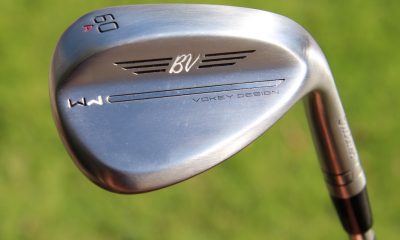

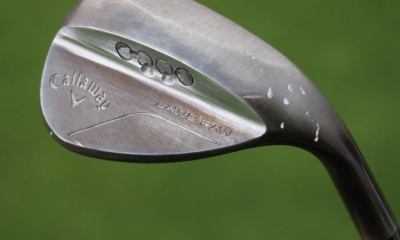

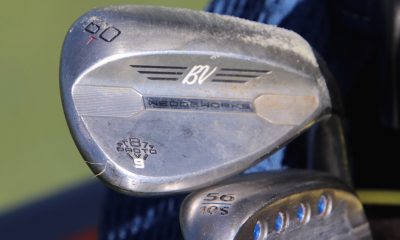

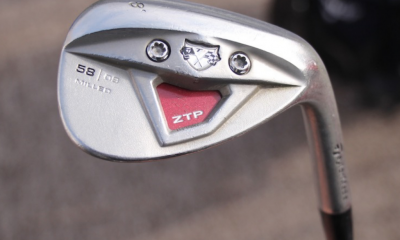

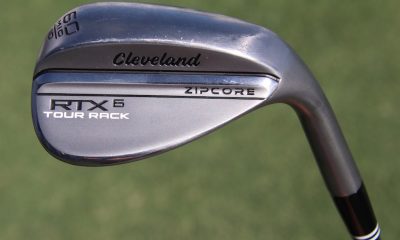

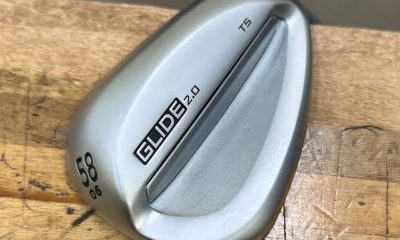
















Tony Wright
Jul 11, 2017 at 12:29 pm
Don an absolutely great article thank you. Unless I missed it, I do not see any discussion about the shafts used in tour wedges. Do tour players use the same shafts in their wedges as they use in their irons? If not why not, and what are the trends? Would love to hear your thoughts on this thanks.
Don Wood
Jul 12, 2017 at 4:06 pm
Thank you Tony!
As a general rule, shafts in tour wedges typically get a little softer. Wedge shafts can be basically “8 iron” shafts. But because the wedges have heavier head weights, the flex is softer. That’s not true for all as some tour players want their wedges to be the stiffest ones in the bag. And the wedges are almost always steel…even if the player has mostly graphite throughout the bag.
Golf Code Weekly
Jun 20, 2017 at 9:24 am
What a great article!
That was the most educational thing i have read in a long time, really interesting to learn about this stuff from someone who clearly knows a lot
thanks!
Bill
Jun 19, 2017 at 3:27 pm
Please ignore trolls ooffa and SH. The discussion is informative.
Don Wood
Jun 19, 2017 at 11:11 pm
Thanks Bill,
Trolls are a very important part of our society these days. Their numbers…or lack of them tell a lot about the vulnerability of what we say. Golf Trolls Are people too. And if they cannot contribute to our game, they at least have the desire to be a part of the discussion. Let’s give em a break.
ooffa
Jun 21, 2017 at 8:52 pm
I’m sorry I didn’t mean “often incorrect”.
I meant to say always.
tazz2293
Jun 18, 2017 at 8:32 pm
Thanks for the article Don.
Very informative and a great lesson.
ooffa
Jun 18, 2017 at 6:14 pm
ZZZZZZZzzzzzzz
Hack
Jun 18, 2017 at 2:51 am
1. Trial and error. You’re gonna have to own several lofts and bounces and rotate them according to what you’re going to encounter that day.
2. 1968? Well they had, basically, rubber balls back then. Rubber could grip the surface, if the surface is sticky-clean enough, and won’t need too many grooves to get spin. Think in terms of Table-Tennis. Flat surface of rubber against plastic balls – the balls spin plenty from the friction (given that the balls are, yes, very light, but still the principle is the same). Modern balls are hard, even with urethane, and need grooves to spin them. But then again, that is why we got rid of square grooves, as those were grabbing the ball and spinning them too much
Don Wood
Jun 17, 2017 at 8:51 pm
Hello Bubba,
Thank you for your question.
I had driving range access and knew many of the players and player reps.
Most of the time the players were pretty accommodating and didn’t mind a few measurements. All but a small handful had no objections. The other manufacturers really didn’t get the full understanding of what we were doing as it may have gone unreported by their player reps.
Net bounce became important because a nominal bounce angle measurement wasn’t a reliable indicator of how the sole would behave without knowing its other properties. Also, a single measurement in the center isn’t indicative of the behavior of the sole on various types of shots.
I’m not at all surprised at the bounce readings of your wedge.
bounce
Jun 17, 2017 at 1:44 pm
Don, I don’t understand how grinding off the flange increases bounce angle? Wouldn’t the bounce angle stay the same, unless part of the high point of the camber was ground down? Can you help me understand that. thanks.
“The 56-degree wedges were normally bent to 54 degrees, and usually much of their flanges had been ground off usually to make them narrower (it should be noted that doing that actually INCREASES the measured bounce angle).”
Don Wood
Jun 17, 2017 at 8:56 pm
Thank you for your question.
The answer has to do with the camber or the roundness from leading edge to back of the flange edge.
Bounce angle is measured from a tangent at the center of the sole equidistant to the edges of the leading and trailing edges. And so if one of these edges is moved towards the center as a result of grinding, the tangential center point migrates to the opposite side…along the arc of the camber.
bounce
Jun 17, 2017 at 10:30 pm
Ok that explains it. But if you measure it that way, how is knowing that # useful to anyone? You can have exact same wedges, both high points in camber intact, but 1 has relief on the trail edge. The one with relief is still playing the same way as the stock, as long as the high point in camber is still in tact after the grind. It plays the same way on everything except when the face gets wide open. Why call it “low bounce” just because sole length got shorter? It doesn’t tell the whole story.
Don Wood
Jun 18, 2017 at 11:18 am
Actually, the entire surface area of the sole has a dramatic effect on the “bounce potential” of the wedge at nearly any face orientation in the circumstances of thick contact. So if we grind the back flange to narrow the sole, that quantity is reduced. While a perfectly solid shot hit with a square face may not be affected, once we travel outside of those pristine strike conditions, we need to disperse the friction over a larger area.
bounce
Jun 19, 2017 at 2:17 am
don, anyone seriously putting relief on the trail edge is doing it to get the leading edge lower on open face partial shots.
They could careless how it performs when you take a 10 inch divot, because this player simply doesn’t do that.
Am I wrong?
Rex
Jun 17, 2017 at 1:32 pm
Where’s the part about wedges?
Desmond
Jun 17, 2017 at 1:13 pm
Appreciate the history lesson.